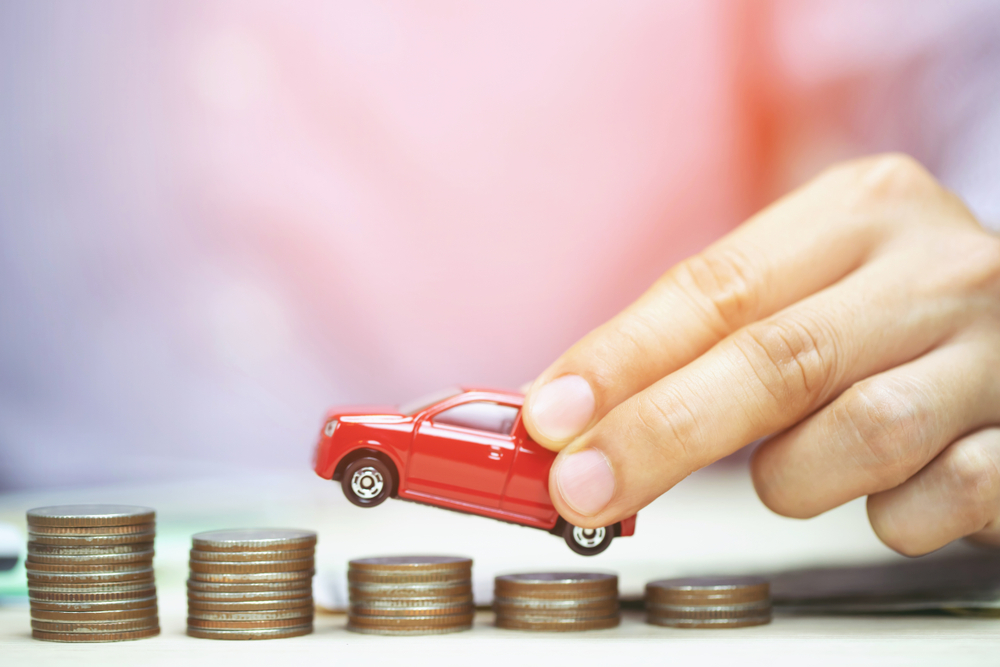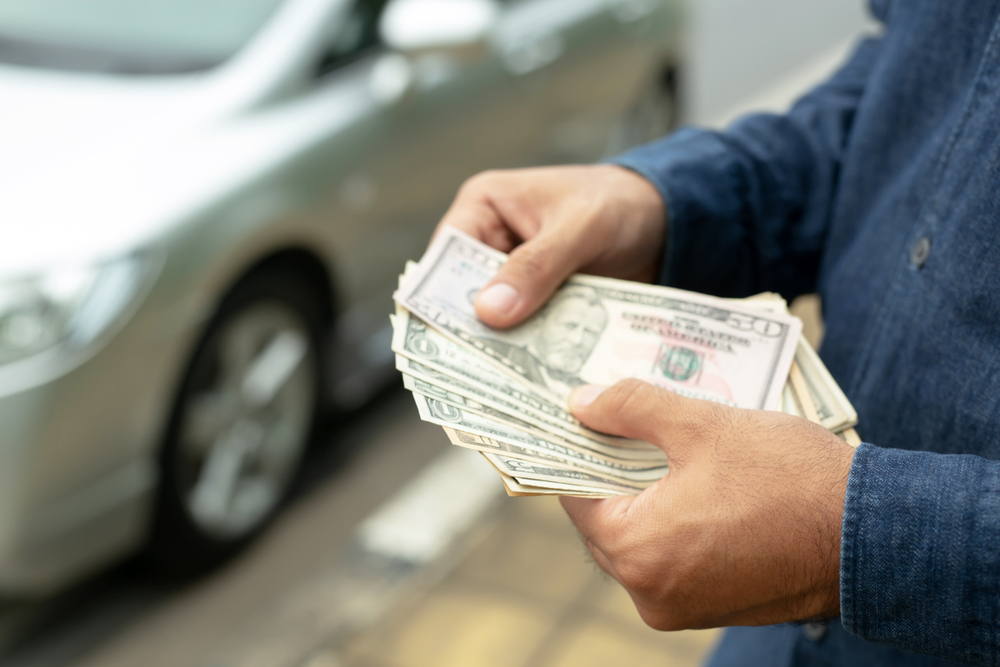Buying a new or used car can be very financially focused. Buyers will need to determine how they plan to pay for their must-have vehicle. While most buyers get financed through a lender, others pay for a vehicle in cash. Those who opt for financing, though, might need to offer up a down payment.
Some buyers have saved a significant amount for a down payment, but some buyers are unprepared and try to come up with any down payment for that vehicle. Buyers wondering how much down payment for a car is necessary can focus on these guidelines and tips.
What’s a Good Down Payment on a Car?
Before focusing on how much to secure for a down payment, consumers might focus on how much car they can afford to purchase. Experts recommend that the monthly payment of a car should be less than 10 percent of an individual’s monthly take-home pay (this is the amount that’s left after taxes and other deductions like healthcare).
Spending too much on a vehicle could impact other areas of an individual’s finances. Buying a car shouldn’t cause an individual to pinch their food budget or make too many other financial concessions. Instead, consumers should focus on what they can afford per month.
To get a better understanding of the financial big picture, consumers can review their monthly costs and expenses. Add all the bills and expenses together to obtain a total—don’t forget to include food, fuel, etc. Consumers also need to total up their monthly income, and then they need to deduct all the expenses from the income.
Is there enough left for a car payment? Would spending less than 10 percent of monthly take home pay still crunch the budget? These are important considerations, as some consumers may find that they can spend much less on a vehicle than they assumed.
In addition, consumers also can request their credit report. This helps an individual better understand their credit risk or worthiness. Review the credit score and check over the report to make sure there are no mistakes.
Buyers can use the credit score from their report when using a car payment calculator. NerdWallet’s calculator helps buyers understand interest rate terms for different credit scores. The calculator also can help buyers understand payment obligations and how much car they might be able to afford.

How Much to Put Down on a Car
When buyers have reviewed their credit report and their finances and have determined how much they can spend for a car, they also need to understand the best options for a down payment. Some experts recommend a 20 percent down payment for a new car and a 10 percent down payment on a used vehicle.
For a $20,000 vehicle, a 20 percent down payment would equal $4,000. Some buyers might not have this amount of money set aside for a down payment. Others could struggle to make any down payment.
Lenders might offer more favorable terms and interest rates for those who can make a down payment or even individuals who can put 20 percent down. Why? A down payment reduces the lender’s risk by lowering the amount that the lender needs to provide for the vehicle.
How Much Down Payment for Car that is Used or Pre-Owned
Experts recommend that car buyers try to allocate 10 percent down for a used car. This is due to the fact that a used vehicle has already been impacted by depreciation.
Cars depreciate once they are driven off the lot. In fact, cars will lose anywhere from nine to 11 percent once they leave the dealership. After five years, a vehicle might have lost 60 percent of its original value.
There could be exceptions to these numbers, though. Post-Covid, the United States faced a shortage of microchips; these tiny parts were essential for the construction of modern-day vehicles. For some manufacturers, the shortage shut down production.
In response, the used car market was in high demand. Buyers were interested in used models, and dealerships suddenly were moving these cars off their lots quickly. The demand for used cars pushed the value of many vehicles higher. Some models might be worth more used than they were worth the day they were originally purchased.
In a high-demand used market, the amount of money that a buyer allocates for a down payment might depend on their financial situation. In addition, some buyers have a trade-in that also could decrease the price of a new or used vehicle.
Why is a Down Payment Beneficial?
Some buyers might wonder why they even need to allocate a down payment. How is a down payment beneficial? The down payment for a vehicle helps:
- Offset the value loss from depreciation
- Removes some risk from the lender
- Can help buyers get better loan terms and/or rates
- Helps buyers pay less interest during their loan
Depreciation Can Cause an Upside Down Loan
Cars depreciate quickly. The issue with depreciation is that it affects the value of the car in relation to the balance of the loan. If the car drives off the lot, loses 10 percent of its value, and the buyer opted for a lower than normal down payment, the car could immediately be underwater.
An underwater vehicle or loan means that the loan balance is greater than the car’s value. This is bad because if the owner needs to sell the car or if they total the car in an accident (and don’t have GAP insurance), the value won’t be high enough to pay off the loan. The owner will need to come up with that extra cash.
Helps Lower a Lender’s Risk
Allocating a 20 percent down payment for a new car means the lender only has to finance 80 percent of the value of the vehicle. The car could have equity or, at the very least, not be pulled underwater from depreciation.
Buyers Might Secure Better Terms or Rates
A down payment helps lower the loan amount and can help make the loan less risky in the eyes of a lender. Buyers who offer down payments also might secure better interest rates or loan terms.
While not all buyers might get a lower interest rate because they offer a down payment, those with good credit scores and a down payment could see a benefit from that cash down payment. Every lending situation is unique, however.
Buyers Pay Less Interest during their Loan
A down payment decreases the purchase price of the vehicle. This means that the interest rate is applied to a lower principal. Over the course of the loan, the borrower will pay less interest.
In addition, borrowers who make a significant down payment could reduce the cost of the vehicle enough to opt for a shorter-term loan. They could pay off the vehicle in full after three years instead of six.
Down payments can provide options for buyers related to the loans and the financing for which they might qualify.

Down Payment Promotions
Many consumers have heard the ‘dime down’ commercials advertised on the radio. The allure of these promotions is that the buyer doesn’t have to provide a significant down payment. Instead, a dime could be all that is needed to secure financing for that car.
The offer could be appealing to those who simply don’t have the money saved for a down payment. Is the promotion a good deal, though? The answer really depends on the needs of the buyer.
Some buyers might need to take advantage of these deals because their lending options could be limited. They might have a low credit score, and perhaps this type of promotion allows them to buy the car they need.
Buyers should read the terms of their financing before signing. What’s the interest rate? What is the monthly payment and how long is the loan?
When a down payment is minimal, buyers also need to keep in mind that their vehicle might be underwater when they drive off the lot. This could put them in a precarious situation if they total the car (without GAP insurance).
Research Options at Home with RelayCars
When consumers are researching different vehicle options, they can use RelayCars to preview and explore different models and understand the pricing and specs of different vehicle options. In addition, RelayCars also partners with CarSaver.com to simplify the shopping process and find the best vehicle prices.
Download the RelayCars app to preview vehicles via interactive 3D models or using virtual reality (for those with Google Cardboard). However, buyers also can investigate different models by visiting the RelayCars website on a mobile device.
The RelayCars website lets smartphone or tablet users explore models using 3D models or in augmented reality. The camera on the phone or tablet captures the real world environment, and cars will appear as 3D images within this environment. Drop the vehicle anywhere and walk around it to explore.
Both the RelayCars mobile website and the app let users access information about thousands of makes and models in the virtual inventory. Review the MSRP and specs of the vehicle. Compare models and then visit CarSaver.com to search for favorite models and find the best prices.
With RelayCars, the car shopping experience is immersive and hassle-free.

